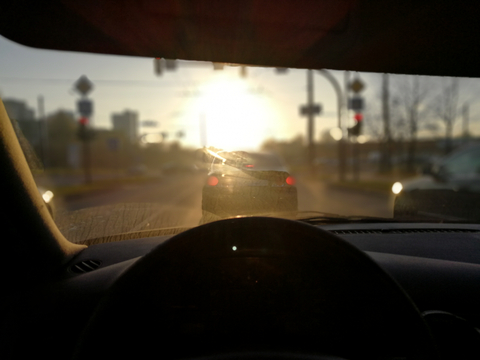Driving Lenses Add Practicality, Anti-Glare to Looking Cool

Corey Hart wears his at night and the sharp-dressed members of ZZ Top prefer them cheap. Their popular tunes on sunglasses make for enjoyable listening but don’t help when making the best choice for driving.
“Sunglasses are so important people tend to include them in their mental checklist with wallet and cell phone before they leave the house,” said Bill Yerby, director of sales and marketing for Serengeti Eyewear. “While glare is the biggest issue, eye strain caused by harsh light and squinting presents a real and pervasive hazard for drivers.”
Glare comes not only from the sun, but also from roads and vehicles. Yerby suggested using sun glasses with polarized lenses, which filters the intensity of reflected light.
“No other technology comes close to cutting glare the way polarization does.”
Style usually ranks atop the list when shopping for glasses. While he fully appreciates a well-crafted design, Yerby urged drivers to consider a product’s ability as well.
“Obviously everyone wants glasses that look good but their technology shouldn’t be overlooked.”
Lenses are made of glass, plastic or composites. Glass lenses provide the best visual clarity, Yerby said.
Color affects visibility as well. Yerby suggested amber-tinted shades for driving.
“Amber is the best compromise because it is dark enough for protection in bright sunlight but light enough to still perform in the shade.”
Price for varies greatly as do costs. Those $10 sunglasses in the aisle at the gas station aren’t necessarily a bargain in the long run. Lenses probably won’t last long and may distort your view, he said.
“Lenses in cheaper sunglasses typically are cut from flat sheets of plastic and then put into a frame,” Yerby said. “Then the material is bent to get it into a frame and that can distort your view.”
Peripheral vision suffers most from the distortion, he said. Drivers rely on good peripheral vision to detect changes in lanes or on sides of the road.
“Inexpensive glasses tend to pinch the bridge of your nose, the hinges wear out and the shape doesn’t conform to the shape of your head,” he said.
All glasses require careful cleaning. Oils from your hands and airborne contaminants coat the lenses to impede your vision.
Glass cleaners often contain harsh chemicals that can strip the anti-fog or anti-reflective coating from the glasses, Yerby said. A warm water rinse and wipe-down with the microfiber towel offers a safe alternative.
Yerby recommends a trip to the produce aisle if you ever need a product to clean stubborn stains off your sunglasses.
“Lots of supermarkets sell a spray for cleaning fruits and vegetables and we’ve found it works wonders,” he said. “It’s obviously non-toxic because it’s edible and cuts through fingerprints and dust.”
Yerby offers the following advice when buying and caring for sunglasses.
- Look for polarized lenses. Nothing on the market competes with polarized lenses in terms of reducing glare.
- Care for your purchase: A rinse in warm water and a wipe down with a drying cloth cleans most residue. Use a vegetable cleaner from the produce aisle to give them a thorough cleanse.
- Amber-tinted lenses are the best for driving. The color provides the best balance between driving in brightness and in shade.
- Quality counts. Convenience store glasses are made with inferior materials and can distort your peripheral vision.